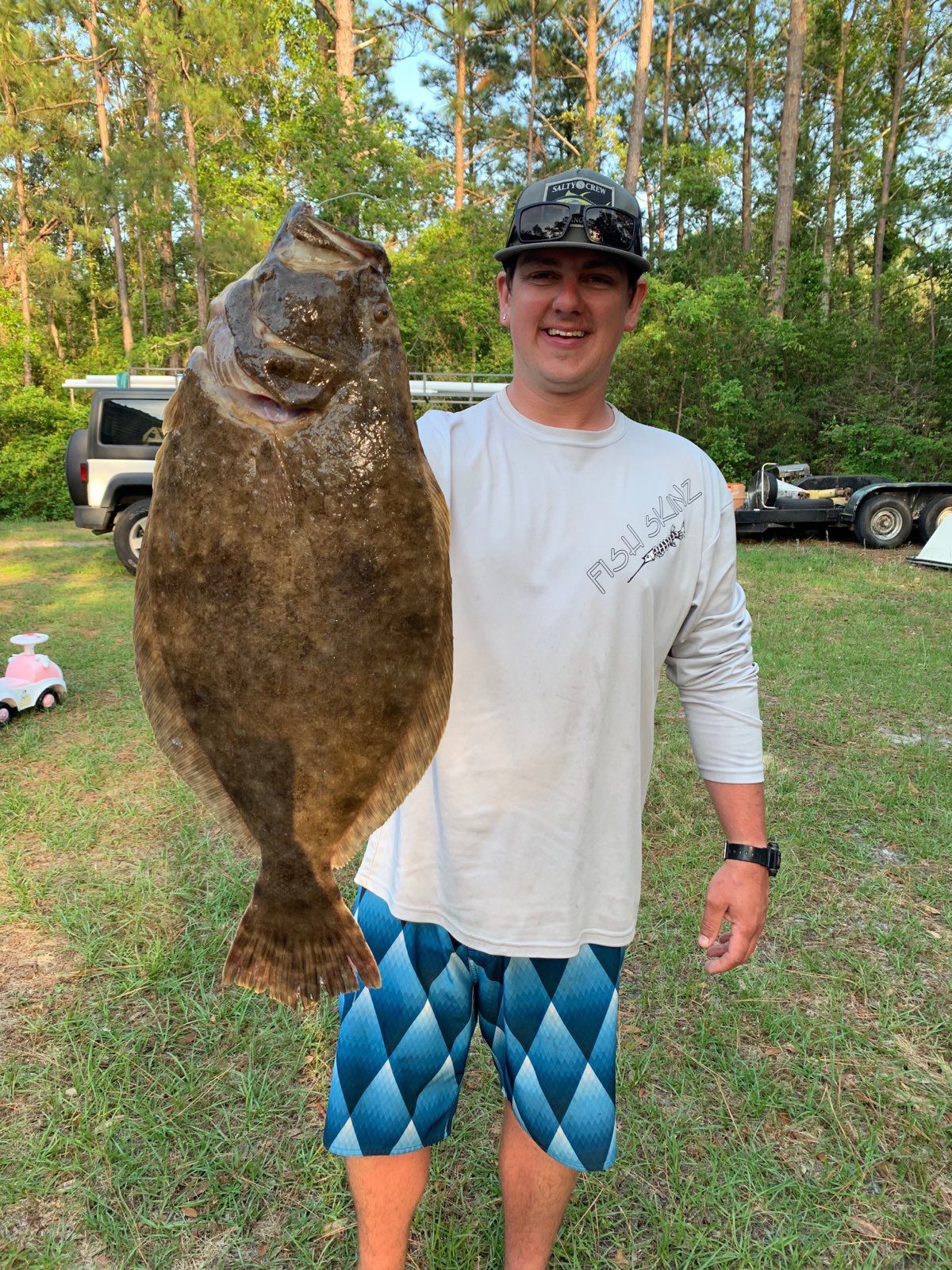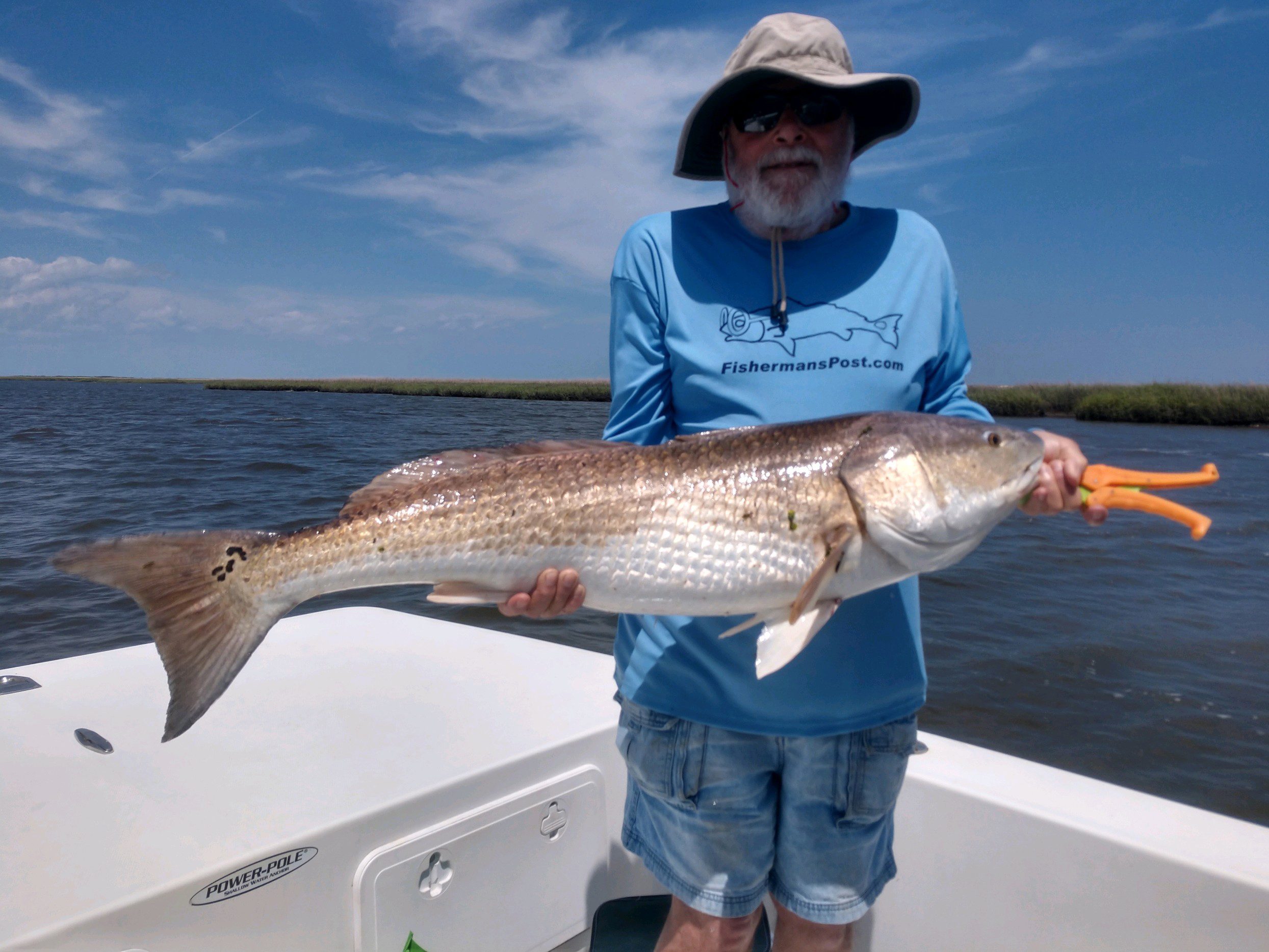Carolina Beach – May 23, 2019
Lewis, of Island Tackle and Hardware, reports that fishing at the Gulf Stream remains steady, with good numbers of mahi, some smaller wahoo, blackfin tuna, and a few sailfish. Skirted ballyhoo has done the trick for most of these fish.
Around the 30 mile area, bottom fishing has been hot for scamp and gag grouper, snappers, beeliners, and grunts. Squid, dead cigar minnows, and live baits have all been productive.
Closer to the beach (from 10 miles and in), there are plenty of kings and spanish mackerel, along with a few bonito. Trolling live baits, as well as Clarkspoons and Drone spoons behind planers, are working best.
A few cobia are being caught near the beach, but most of the fish so far have been small. Trolling live pogies has been the best tactic to fool these early season cobia.
Inshore, the redfish are biting well on both artificial shrimp and live bait. Good numbers of upper-slot to over-slot fish are starting to move in.
Docks and oyster beds continue to hold keeper black drum, with Carolina-rigged fresh shrimp catching the most fish.
Some smaller flounder have been caught in creek holes and in the river, mainly on small baits such as peanut pogies and mud minnows.

Casey Frazier, of Southport, with a 5.73 lb. flounder. The citation-size flounder was caught using a live pogie near Carolina Beach Inlet.
Christian, of Seahawk Inshore Fishing Charters, reports that black drum are chewing pieces of dead shrimp on the bottom during the lower tides. Carolina rigs with 3/4 oz. egg sinkers will do the trick, along with dead shrimp on a jig head when the current is not too strong. The size of these fish have varied, with most being smaller but a few 17-18” fish have been brought to the boat.
Reds have been biting in decent numbers while fishing the same locations as black drum. These are mostly mid-slot to upper-slot fish, with an occasional over-slot mixed in. Live menhaden and mud minnows work best on the bottom with a Carolina rig (or jig head if the current allows).
Sheepshead are in their usual locations along dock pilings and other hard structures. Live fiddler crabs have worked best, and they are the easiest bait to find. Most fish are in the 1-3 lb. range, with some 4-6 lb. fish making an occasional appearance.
Spanish mackerel are in their late spring patterns, and when the weather allows you can find them cruising the beaches chasing glass minnows. Pink Big Nic Spanish Candies (3/4 oz.) have worked best when sight casting. Blues are mixed in with the spanish.
Luke, of Spot On Charters, reports that decent numbers of slot red drum are being found. Structure such as oyster beds and shell bottoms seem to hold the most, and fishing float-rigged mud minnows at high tide around grass points has proven to be the best tactic.
There are some black drum around, with the majority ranging from 15-17”, and a few larger fish mixed in. Carolina-rigged fresh shrimp around low tide has worked best for the black drum.
Flounder are starting to show in small numbers and sizes, but since the waters are cleaning up, the bite should be heating up soon.
Good numbers of spanish and blues are in the nearshore waters. The best chance of catching them is with Clarkspoons and planers.
Luke, of Coastline Charters, reports that red drum action is strong and getting better every day. The reds are hanging around docks, oyster bars, and marsh grass. Live bait on a Carolina rig and Z-Man products on Blue Water Candy jig heads are both producing good numbers of fish.
There are still a few speckled trout around, but the bluefish are starting to take over.
More flounder are beginning to show up in the ICW. The same tactics for red drum have been working for flounder.
There have also been decent numbers of flounder in the ocean on the nearshore wrecks.
Spanish mackerel are going strong from up and down the beach out to a few miles off. Clarkspoons seem to be the lure of choice.
There have been some cobia in the nearshore waters. This time of year it’s always a good idea to keep a bucktail jig or a large live bait ready for one to come by the boat when you are in the ocean.

Larry Phelps with a 42.5″ red drum caught on live menhaden while fishing the lower Cape Fear River with Capt. Jeff Wolfe, of Seahawk Inshore Fishing Charters.
Rod, of OnMyWay Charters, reports that spanish fishing along the beach out to three miles has been productive, with anglers seeing both quantity and quality of fish. Fishing in 25-45’ of water around the inlets has been producing best, and Clarkspoons behind #1 planers or 2 oz. trolling sinkers are both good options. Most of the spanish have been 14-24”.
In the 6-12 mile range, there is a great king mackerel bite. Plenty of big kings are coming off of fast trolling cigar minnows on Blue Water Candy rigs, pink Sea Witches, and Drone spoons, as well as slow trolling live pogies (if you can find one larger than 6”).
Cobia are here and biting.
Bottom fishing in the 25-40 mile range with squid and cigar minnows has produced good numbers of scamps, gags, black sea bass, grunts, and triggerfish.
Fishing at the Gulf Steam has really turned on for mahi, with fish ranging from 15-35 lbs. Pulling Blue Water Candy sea witches or king skirts with ballyhoo scaled down very small has produced the most fish.
A few blackfins and wahoo are still in the mix. If you are out slow trolling, having a downrigger halfway down the water column and another 10-15’ above should produce.
Sailfish have started to show as well.
Anthony, of Kure Beach Pier, reports that some smaller spanish and blues are biting well on Gotcha plugs and mackerel trees. There have also been some citation spanish and chopper blues caught on live bait king rigs.
Pompano and a few keeper flounder have been brought in.
Fresh shrimp on the bottom has produced some decent whiting and black drum.
The king mackerel bite has slowed down.
